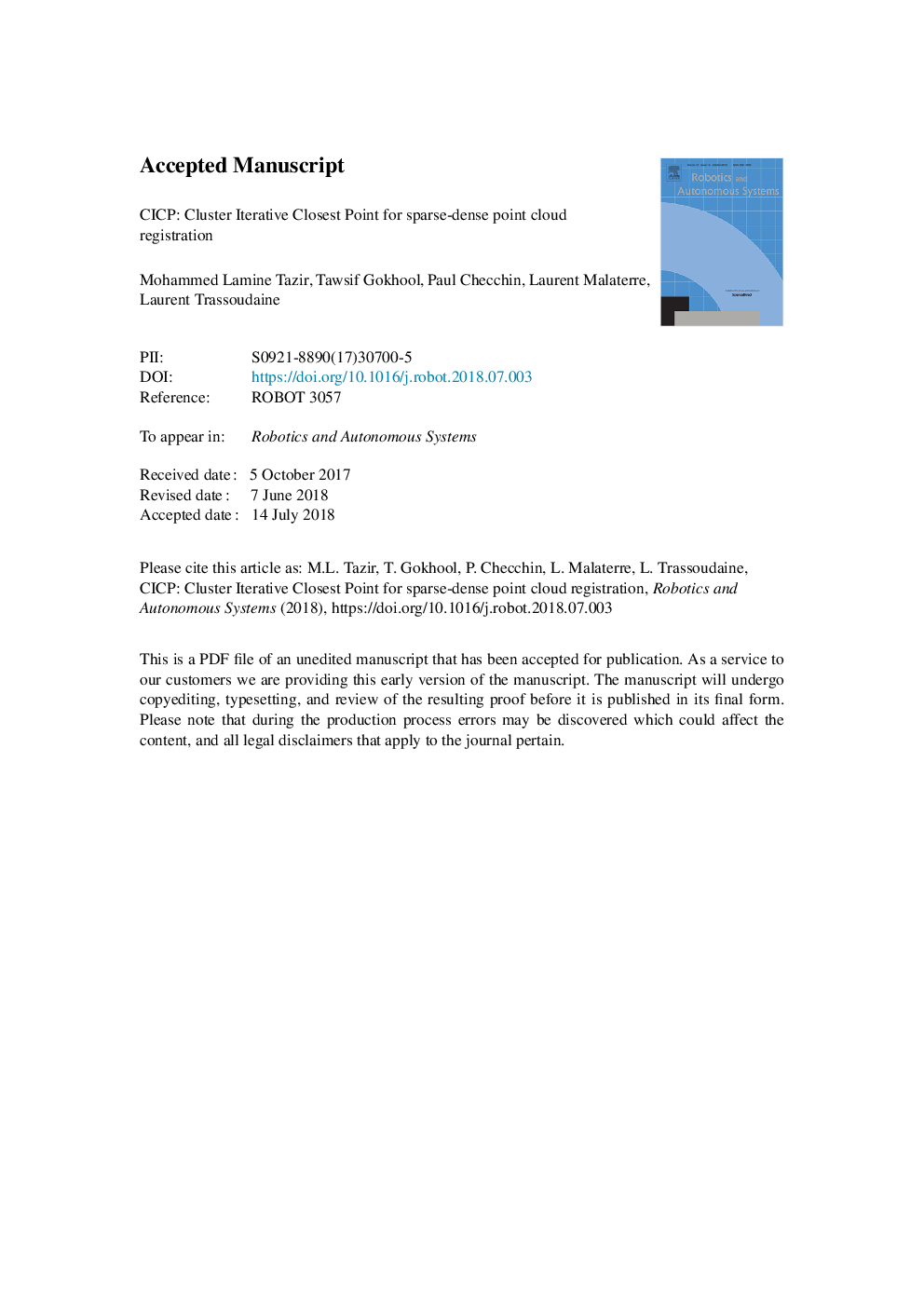| Article ID | Journal | Published Year | Pages | File Type |
|---|---|---|---|---|
| 6867023 | Robotics and Autonomous Systems | 2018 | 32 Pages |
Abstract
Point cloud registration is an important and fundamental building block of mobile robotics. It forms an integral part of the processes of mapping, localization, object detection and recognition, loop closure and many other applications. Throughout the years, registration has been addressed in different ways, based on local features, global descriptor or object-based. However, all these techniques give meaningful results only if the input data are of the same type and density (resolution). Recently, with the technological revolution of 3D sensors, accurate ones producing dense clouds have appeared as well as others faster, more compatible with real-time applications, producing sparse clouds. Accuracy and speed are two sought-after concepts in every robotic application including those cited above, which involves the simultaneous use of both types of sensors, resulting in sparse-dense (or dense-sparse) point cloud registration. The difficulty of sparse to dense registration lies in the fact that there is no direct correspondence between each point in the two clouds, but rather a point equivalent to a set of points. In this paper, a novel approach that surpasses the notion of density is proposed. Its main idea consists in matching points representing each local surface of source cloud with the points representing the corresponding local surfaces in the target cloud. Experiments and comparisons with state-of-the-art methods show that our approach gives better performance. It handles registration of point clouds of different densities acquired by the same sensor with varied resolution or taken from different sensors.
Keywords
Related Topics
Physical Sciences and Engineering
Computer Science
Artificial Intelligence
Authors
M. Lamine Tazir, Tawsif Gokhool, Paul Checchin, Laurent Malaterre, Laurent Trassoudaine,
